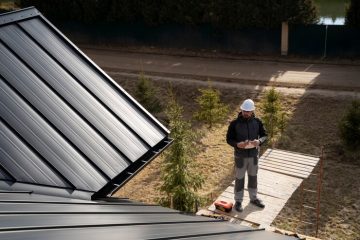Home renovations are often seen as opportunities to enhance comfort, functionality, and aesthetics. However, they also have significant environmental implications, from resource consumption to waste generation. In recent years, there has been a growing awareness of the need for sustainable practices in home renovations to minimize environmental impact.
This article explores the various ways in which sustainable home renovations can contribute to environmental conservation and provides practical tips for homeowners looking to make their renovations more eco-friendly. Castlecrew stands as your premier choice for top-quality home renovation.
Understanding the Environmental Impact
Before delving into sustainable renovation practices, it’s important to understand the environmental impact of traditional renovation methods. Conventional renovation projects typically involve the use of energy-intensive materials, such as concrete, steel, and virgin timber, which contribute to carbon emissions and resource depletion.
Additionally, demolition and construction waste often end up in landfills, further exacerbating environmental degradation. By contrast, sustainable home renovations aim to minimize resource consumption, reduce waste, and mitigate environmental harm.
Choosing Sustainable Materials
One of the key principles of sustainable home renovations is selecting environmentally friendly materials. This involves choosing materials that are responsibly sourced, renewable, and have minimal environmental impact throughout their lifecycle. For example, reclaimed wood, bamboo, and recycled metal are sustainable alternatives to traditional building materials.
Similarly, low-VOC (volatile organic compound) paints and finishes help improve indoor air quality and reduce harmful emissions. By opting for sustainable materials, homeowners can minimize their ecological footprint while creating healthier living spaces.
Energy-Efficient Upgrades
Energy consumption is a major contributor to greenhouse gas emissions and climate change. Sustainable home renovations often prioritize energy-efficient upgrades to reduce reliance on fossil fuels and lower utility bills. This may include installing high-performance insulation, energy-efficient windows and doors, and upgrading to energy-efficient appliances and HVAC systems.
Additionally, incorporating renewable energy sources such as solar panels or geothermal heating can further reduce a home’s carbon footprint and reliance on non-renewable energy sources.
Water Conservation Measures
Water scarcity is a growing concern in many regions, making water conservation an important aspect of sustainable home renovations. Installing water-efficient fixtures such as low-flow toilets, showerheads, and faucets can significantly reduce water consumption without compromising performance.
Rainwater harvesting systems and greywater recycling systems can also help homeowners capture and reuse water for irrigation and non-potable uses, further reducing demand on municipal water supplies.
Waste Reduction Strategies
Construction and demolition waste contribute significantly to landfill volumes and environmental degradation. Sustainable home renovations aim to minimize waste generation through careful planning, salvaging, and recycling. This may involve deconstructing rather than demolishing structures to salvage reusable materials, such as bricks, lumber, and fixtures. Additionally, recycling construction waste, such as concrete, asphalt, and metal, helps divert materials from landfills and conserve valuable resources.
By prioritizing waste reduction strategies, homeowners can minimize their environmental impact and contribute to a more circular economy.
Passive Design Principles
Passive design principles focus on maximizing natural light, ventilation, and thermal comfort to reduce reliance on mechanical heating and cooling systems. Sustainable home renovations often incorporate passive design strategies such as orientation, insulation, shading, and thermal mass to optimize energy efficiency and occupant comfort.
Features such as south-facing windows, overhangs, and thermal curtains help regulate indoor temperatures and reduce the need for artificial heating and cooling. By harnessing natural resources and optimizing building design, homeowners can create more sustainable and comfortable living environments.
Landscaping and Outdoor Spaces
Sustainable home renovations extend beyond the building envelope to include landscaping and outdoor spaces. By choosing native, drought-tolerant plants and implementing water-efficient irrigation systems, homeowners can reduce water consumption and maintenance requirements.
Additionally, incorporating permeable paving materials and rain gardens helps mitigate stormwater runoff and reduce the burden on municipal sewer systems. Creating wildlife-friendly habitats and preserving existing green spaces also contribute to biodiversity conservation and ecosystem health.
Life Cycle Assessment
A comprehensive life cycle assessment (LCA) evaluates the environmental impacts of a renovation project from cradle to grave, taking into account resource extraction, manufacturing, transportation, use, and disposal. By conducting an LCA, homeowners can identify opportunities to minimize environmental impacts and make informed decisions about material selection, construction methods, and waste management practices.
Integrating LCA principles into the renovation process helps ensure that sustainability goals are met and environmental considerations are prioritized throughout the project lifecycle.
Case Studies: Examples of Sustainable Home Renovations
To illustrate the environmental benefits of sustainable home renovations, it’s helpful to examine real-world examples of projects that prioritize eco-friendly practices. Case studies highlighting successful renovations that incorporate sustainable materials, energy-efficient systems, and water conservation measures can inspire and inform homeowners embarking on their own renovation journeys.
By showcasing innovative approaches and measurable outcomes, these case studies demonstrate the feasibility and impact of sustainable home renovations in diverse contexts.
Conclusion
Sustainable home renovations offer an opportunity to reduce environmental impact, conserve resources, and create healthier, more resilient living spaces. By incorporating sustainable materials, energy-efficient upgrades, water conservation measures, waste reduction strategies, passive design principles, and landscaping practices, homeowners can minimize their ecological footprint and contribute to a more sustainable built environment. With careful planning, thoughtful decision-making, and a commitment to sustainability, every renovation project has the potential to make a positive difference for the planet and future generations.




